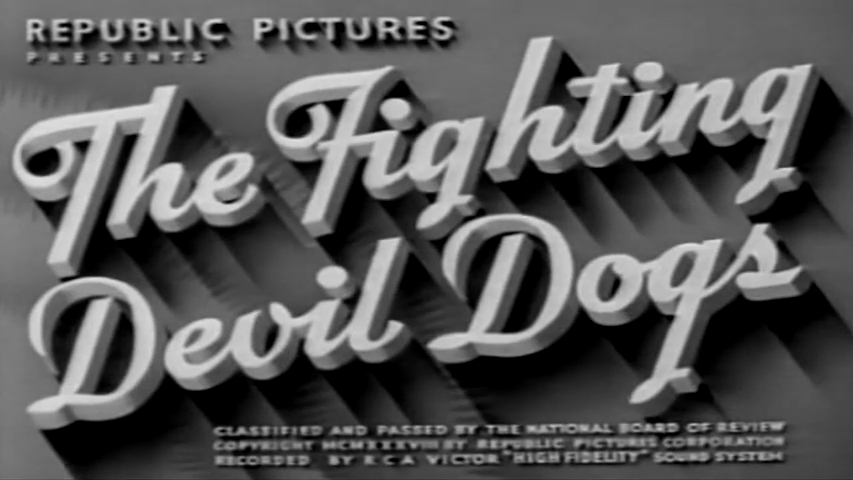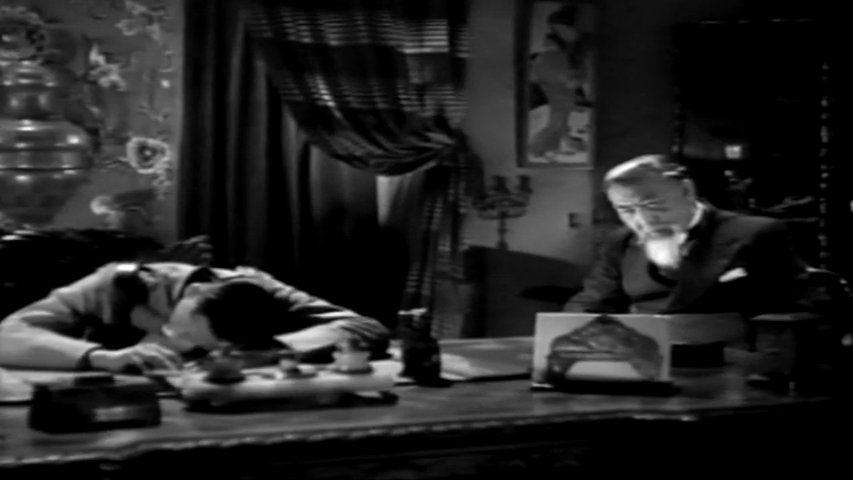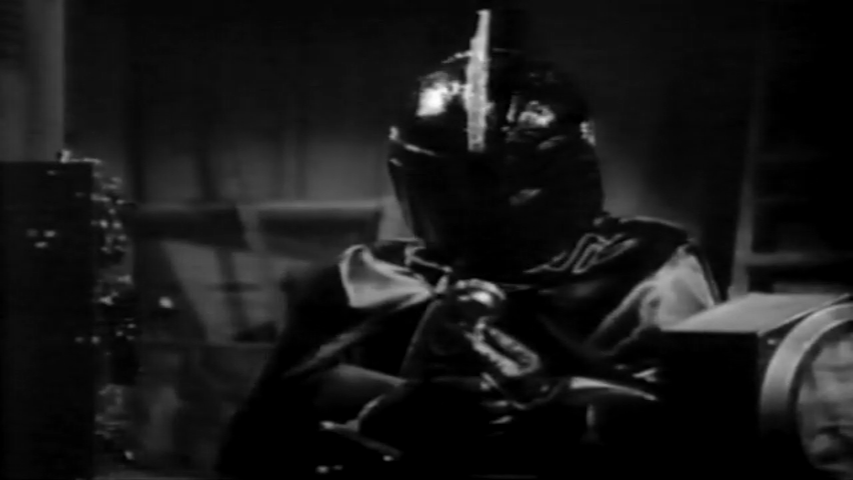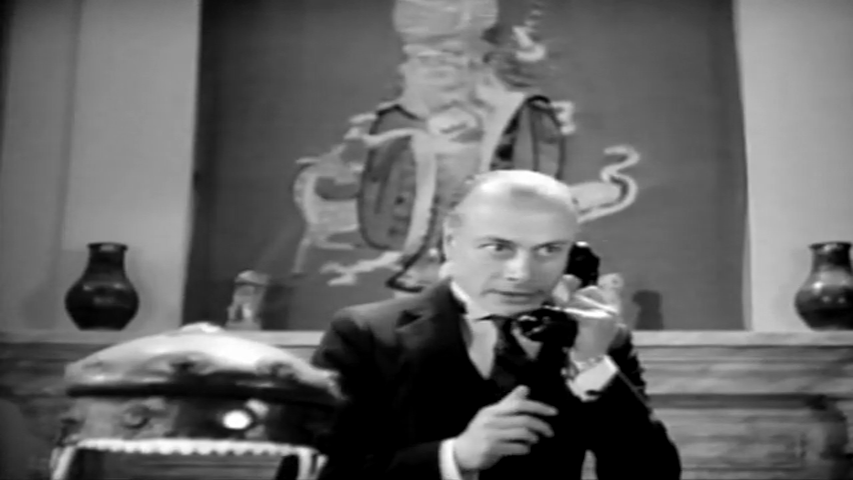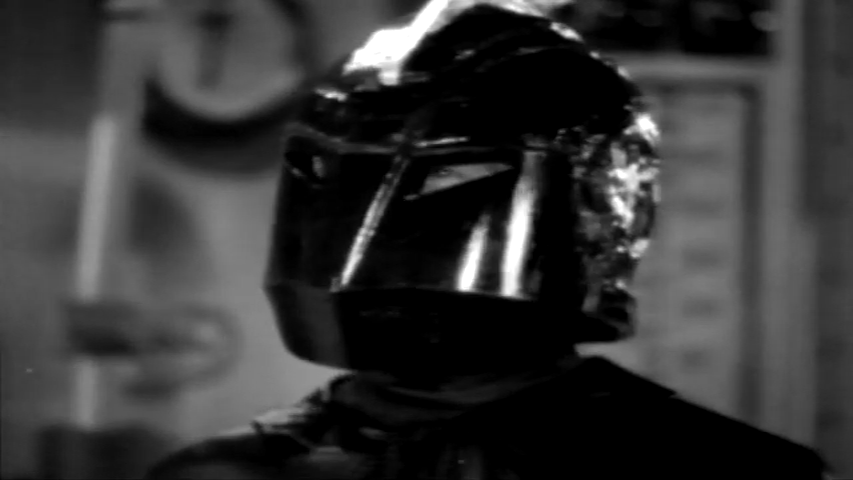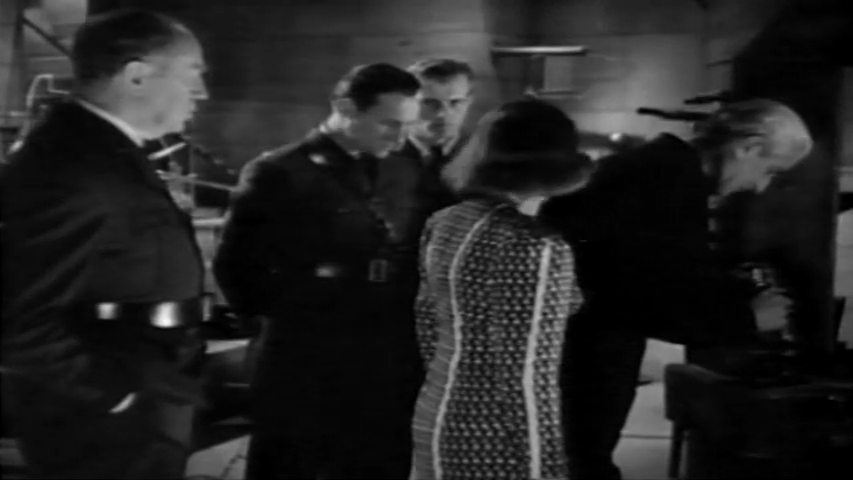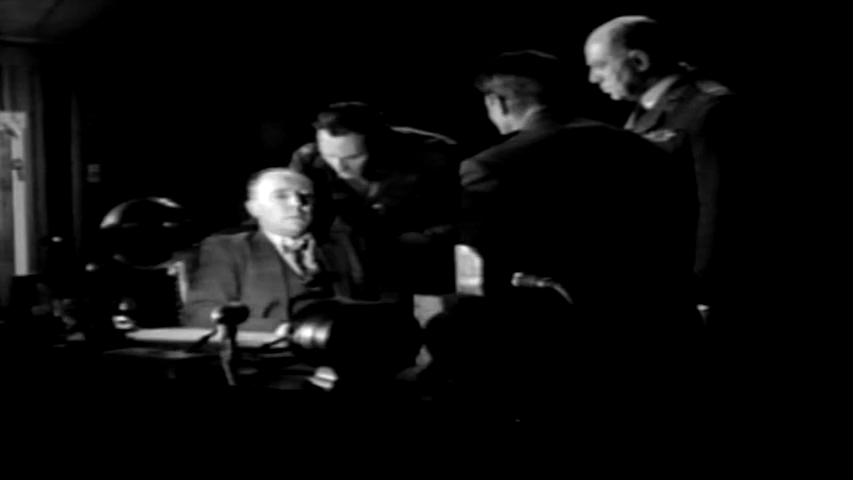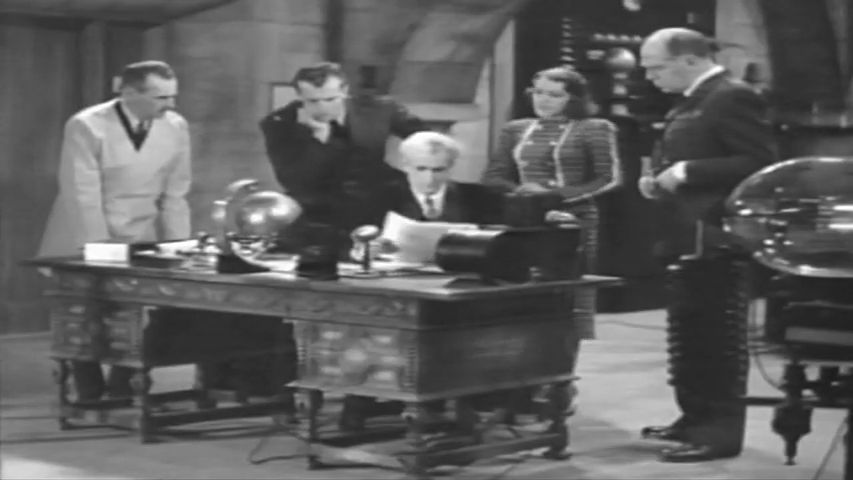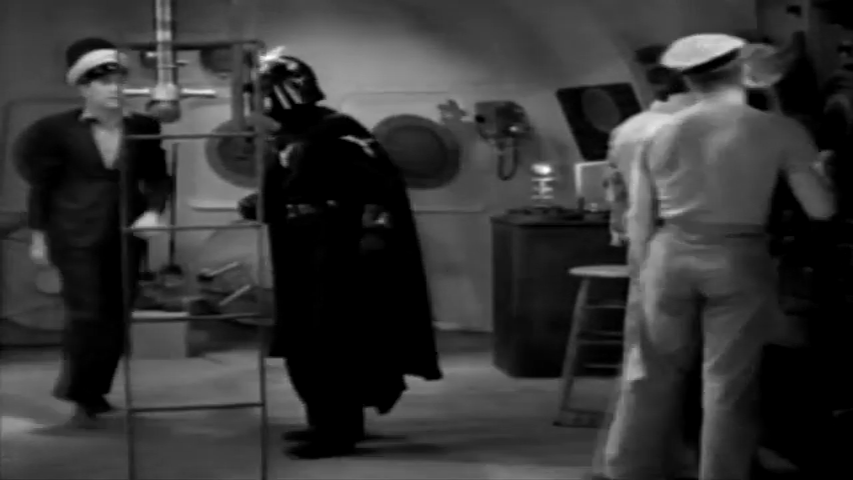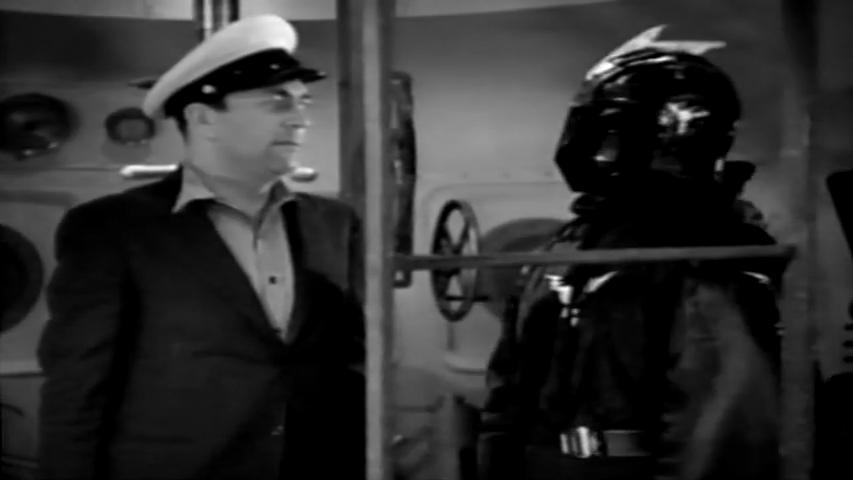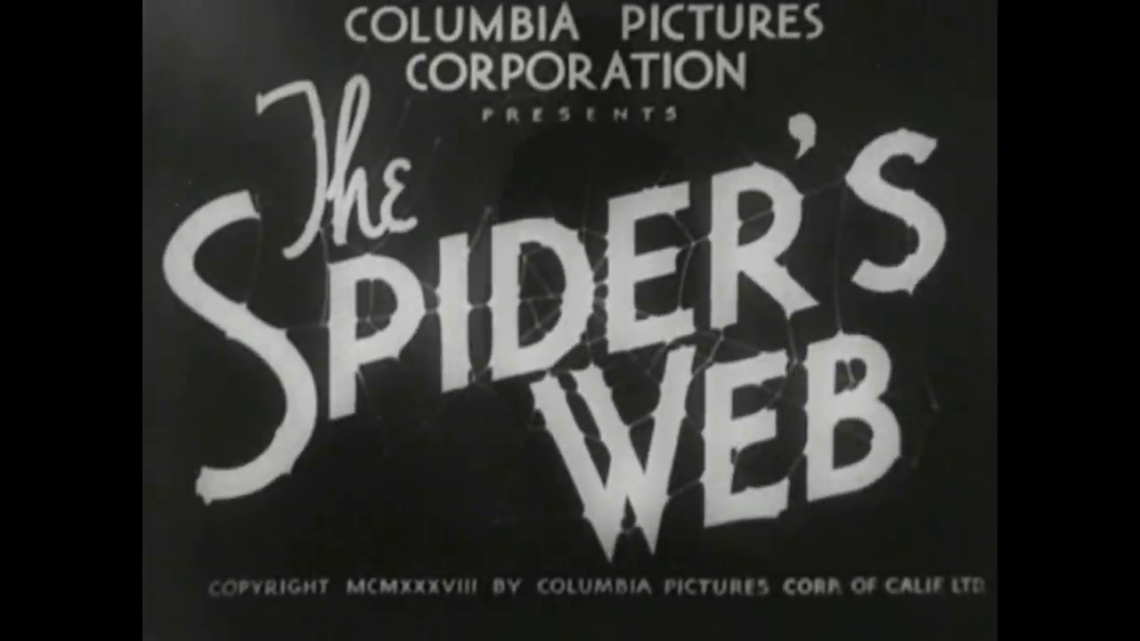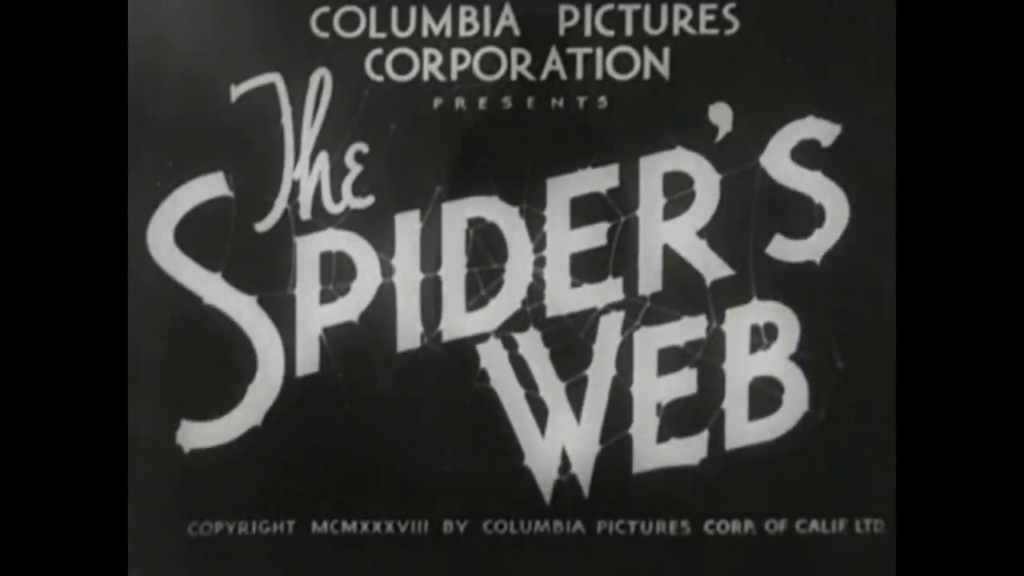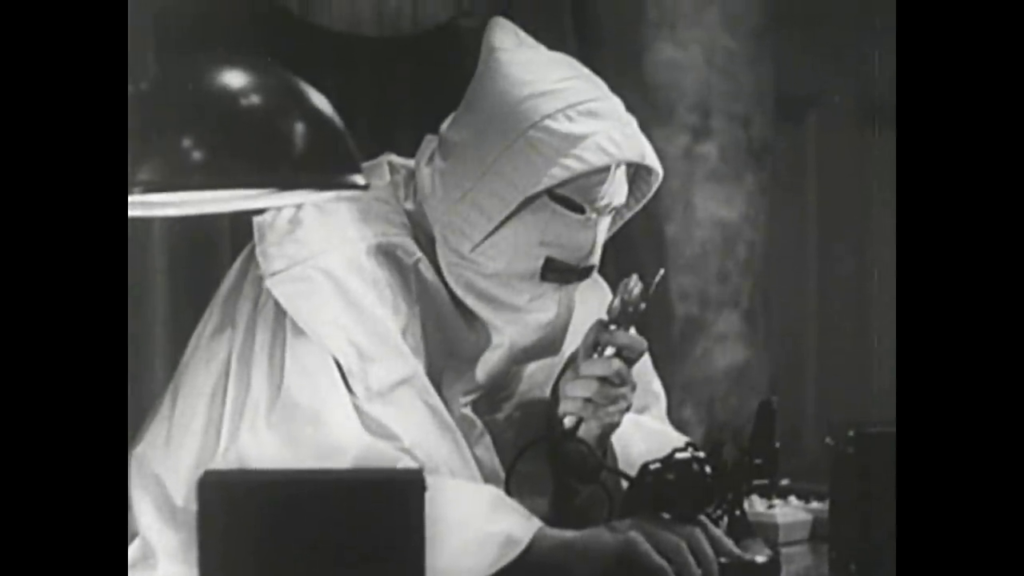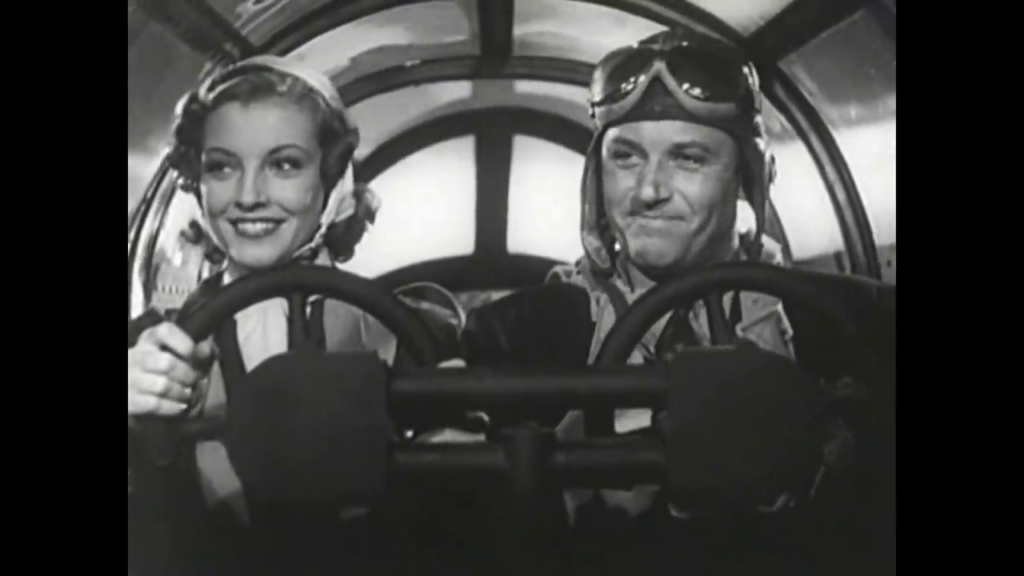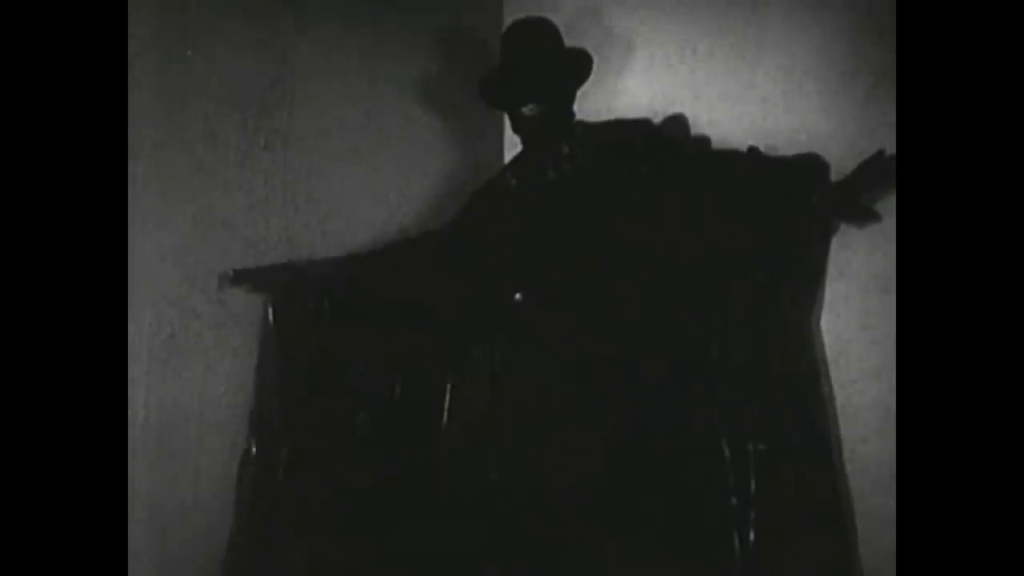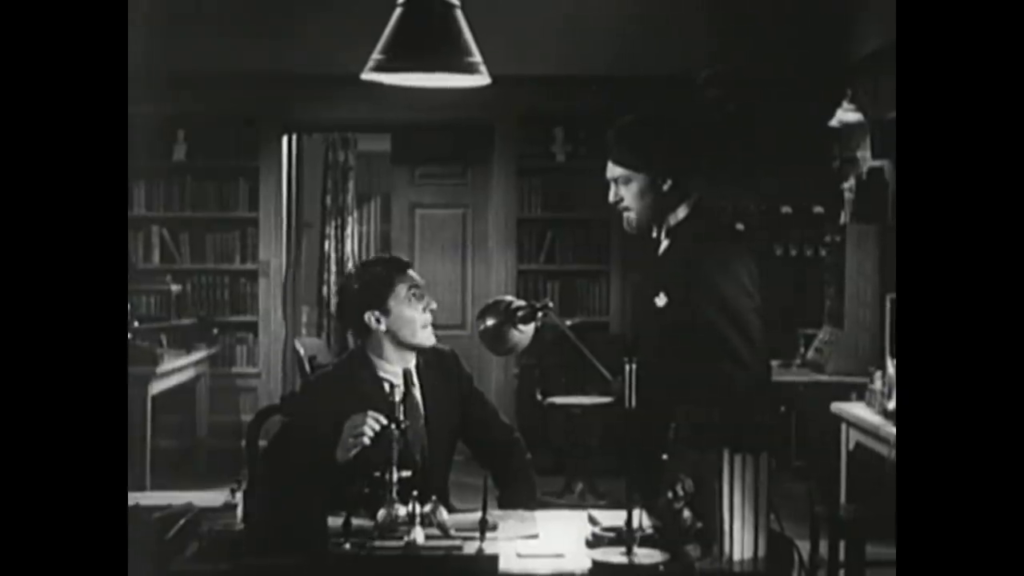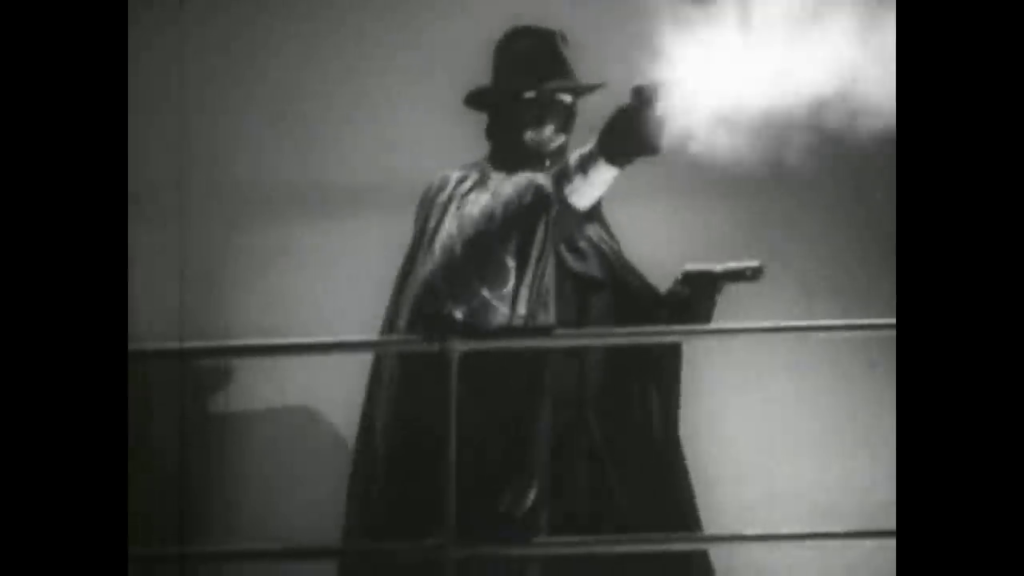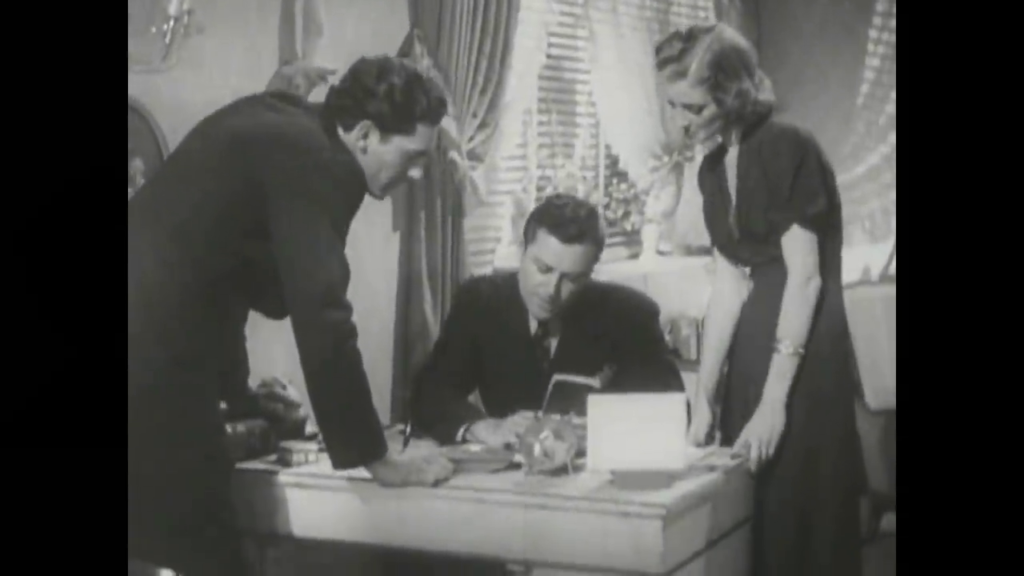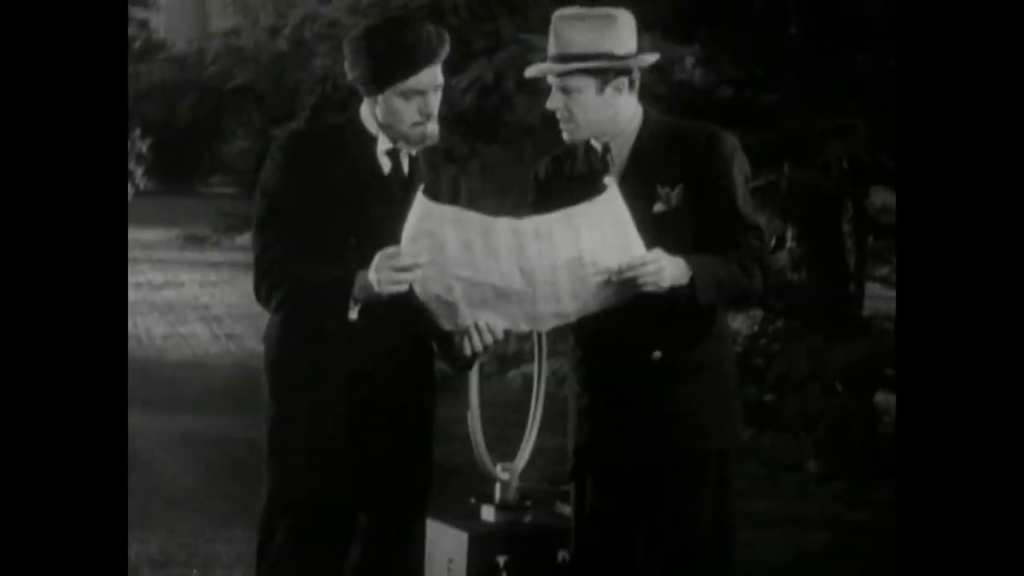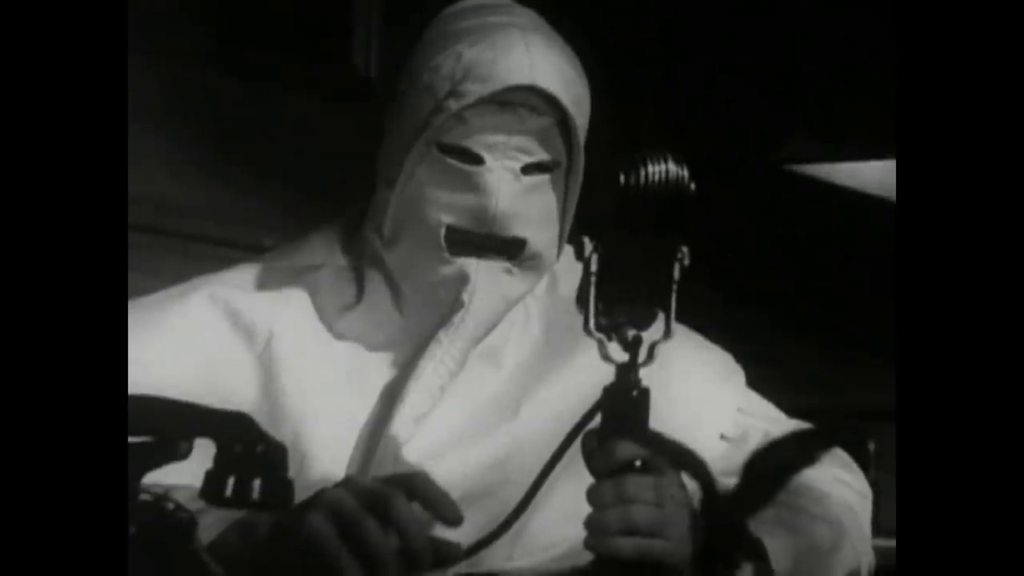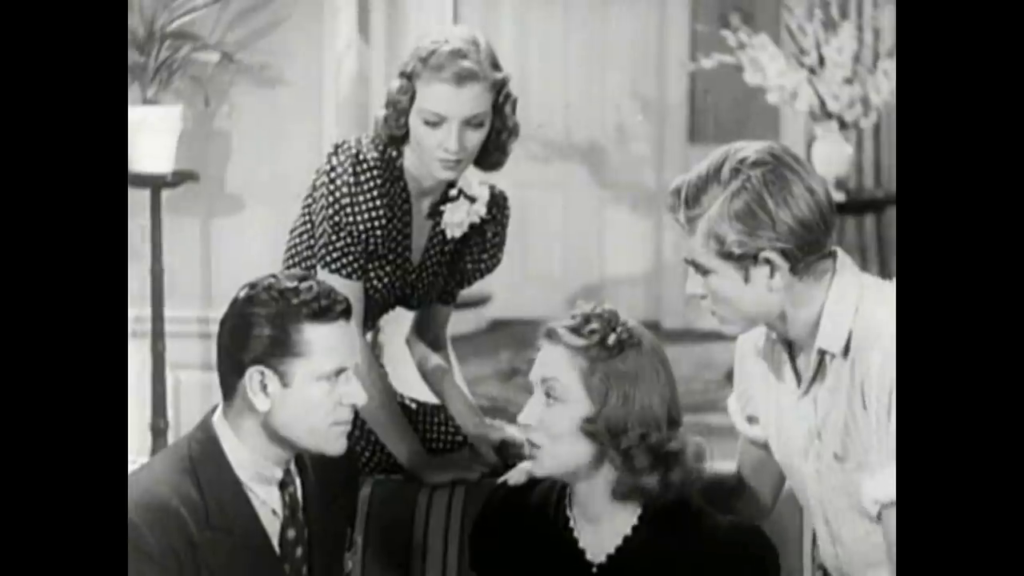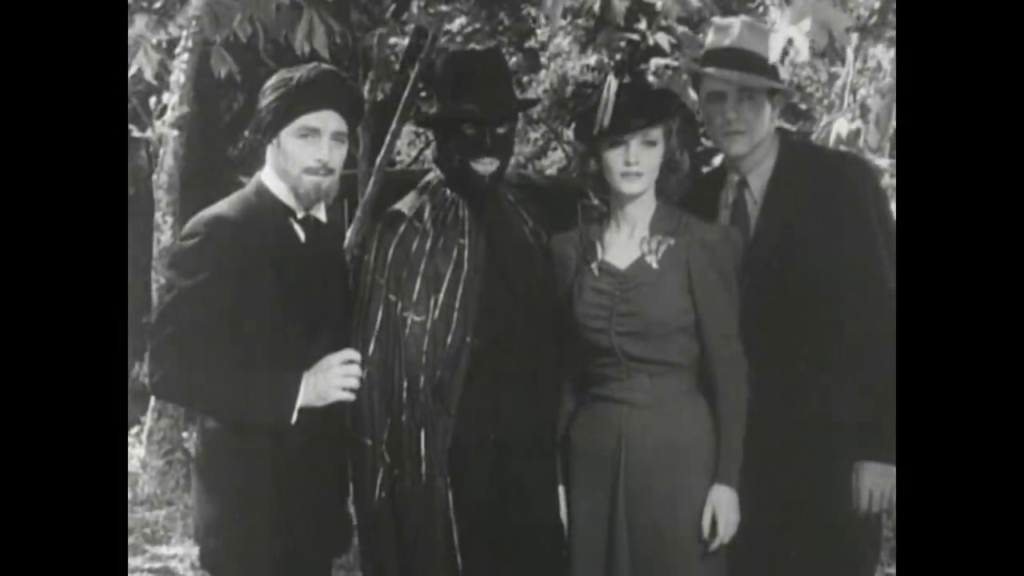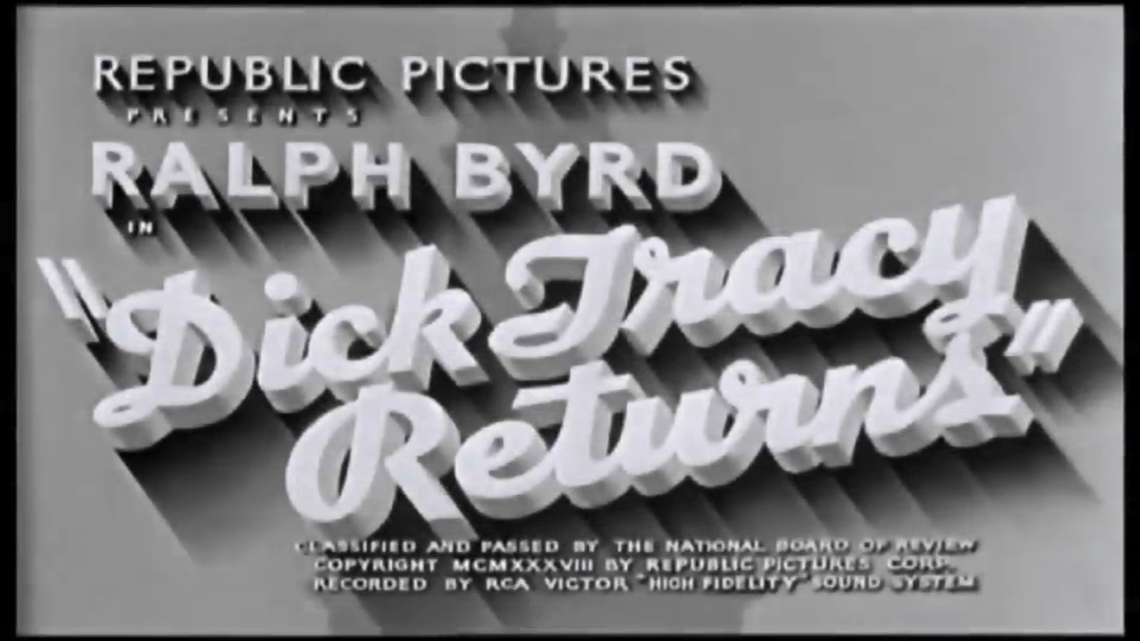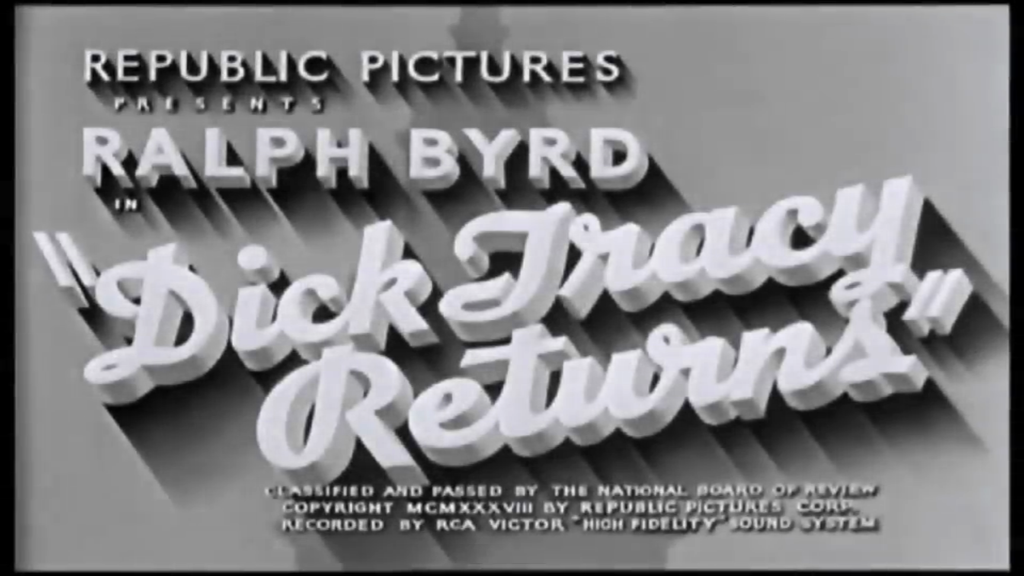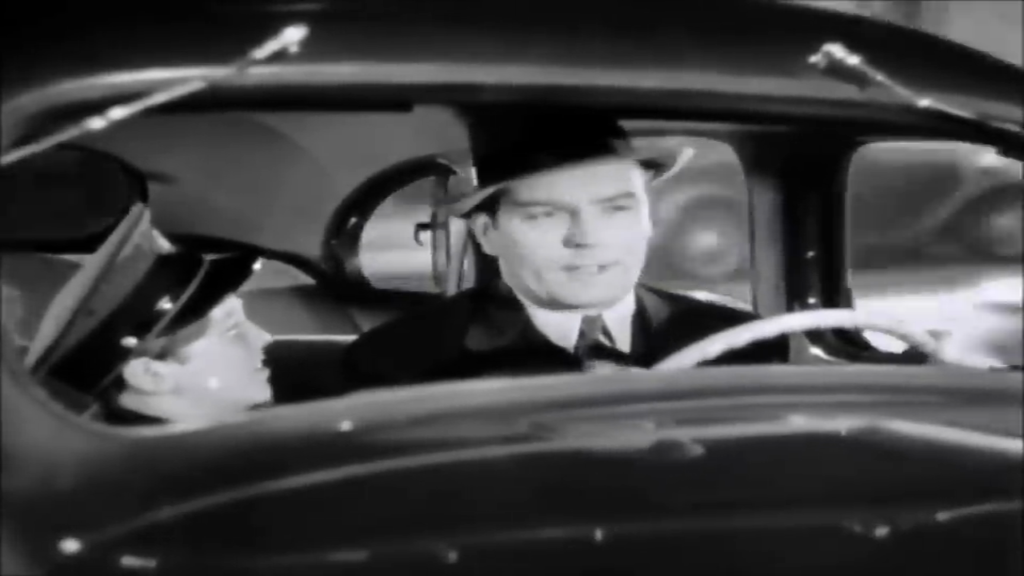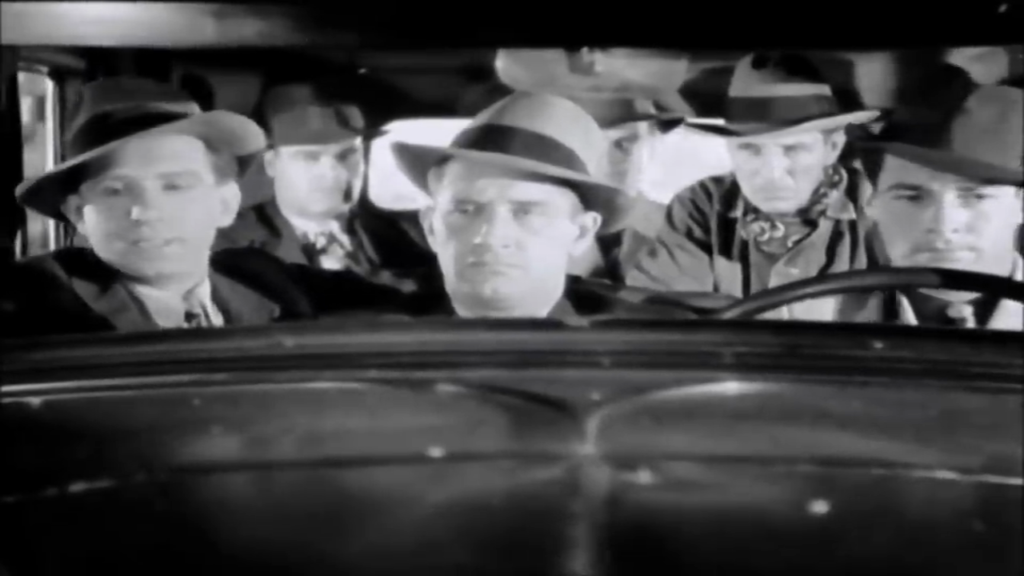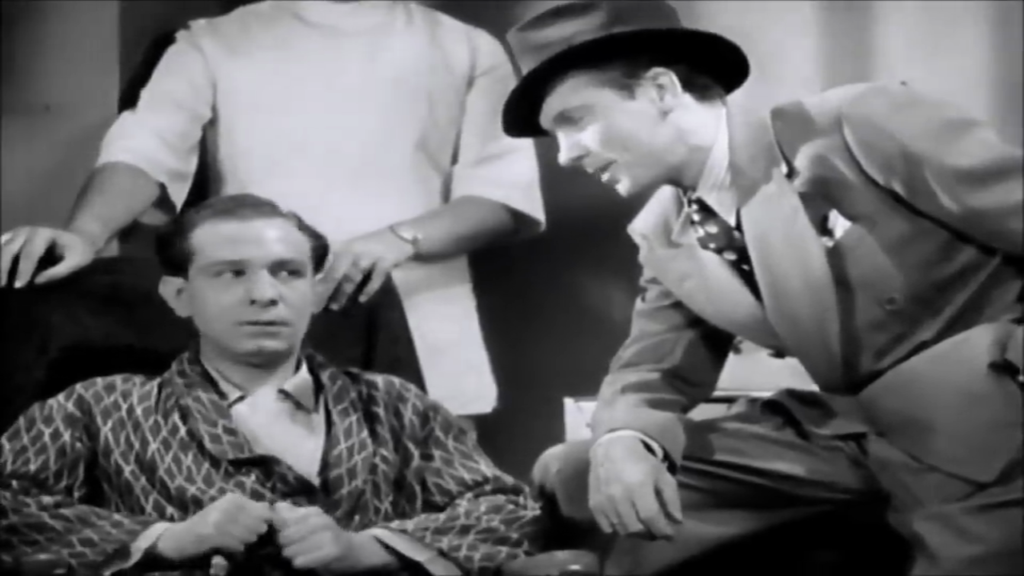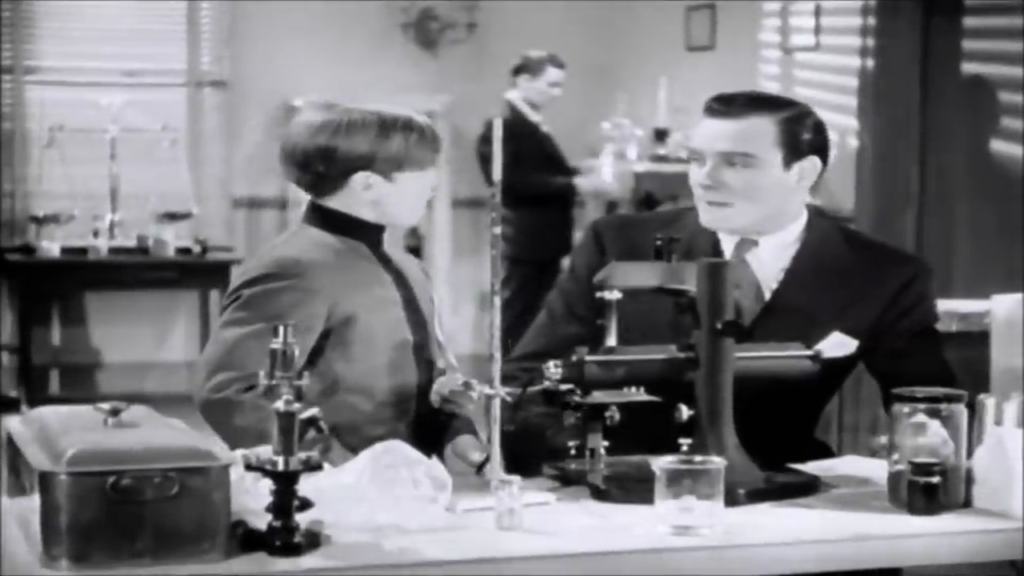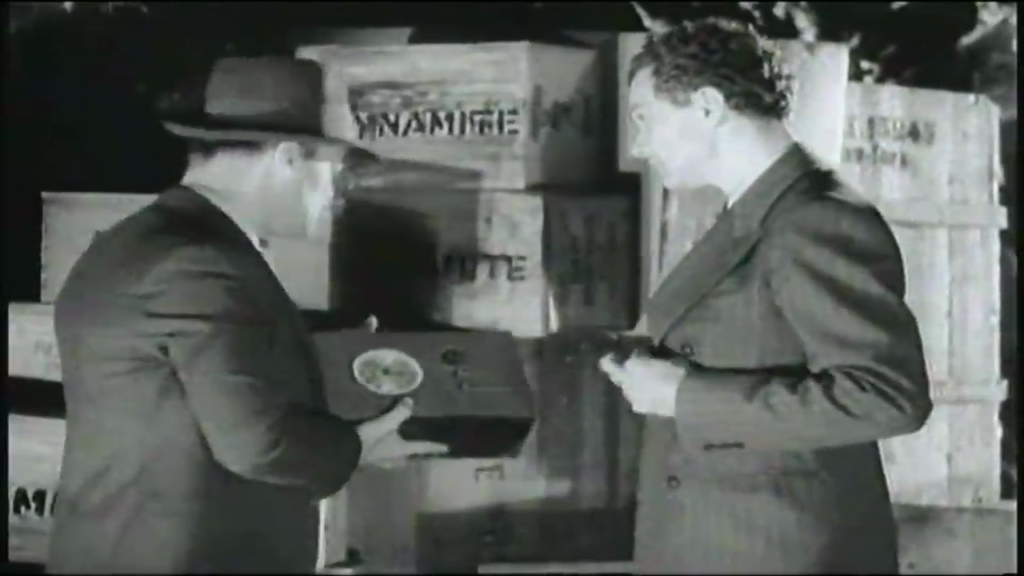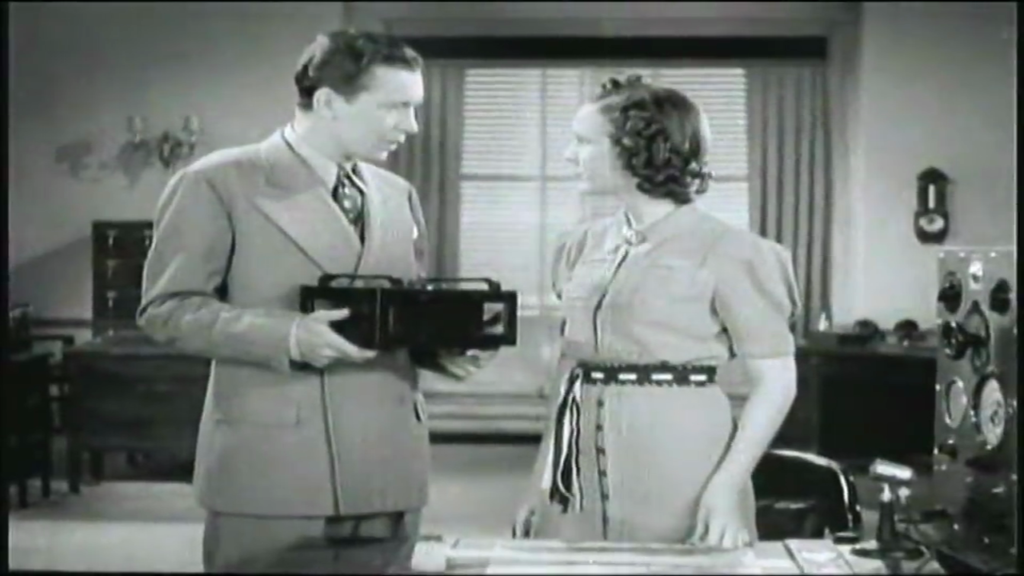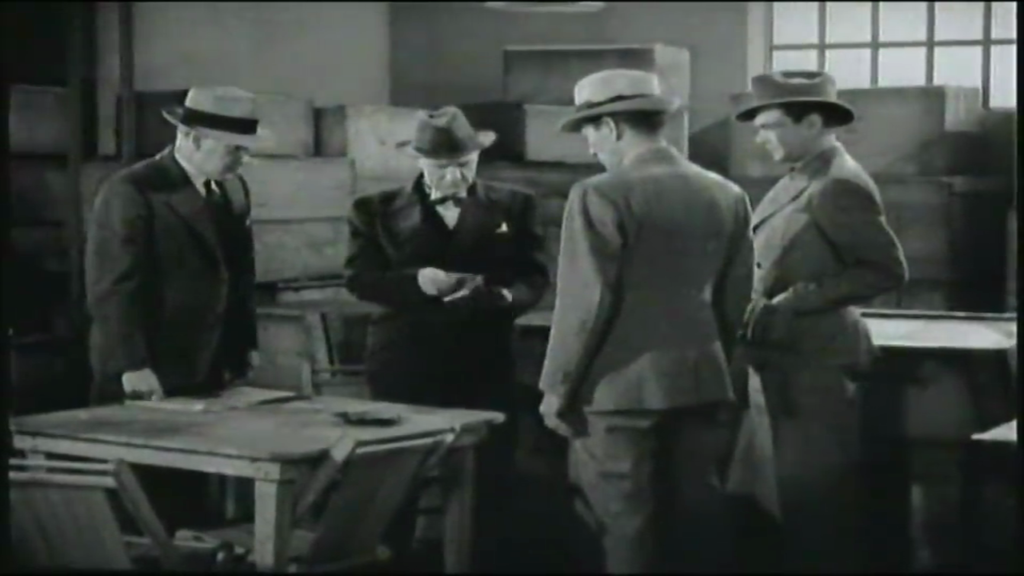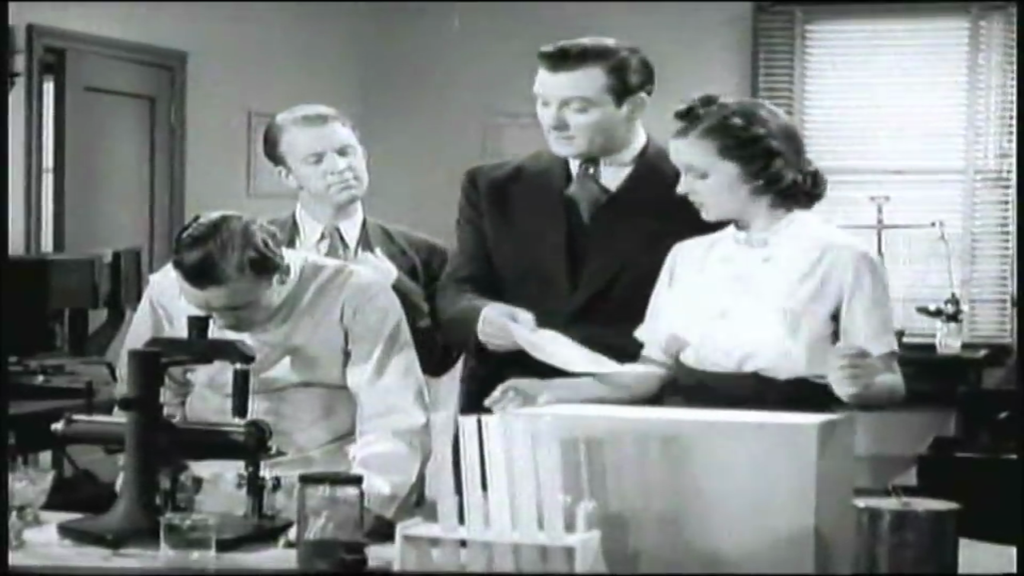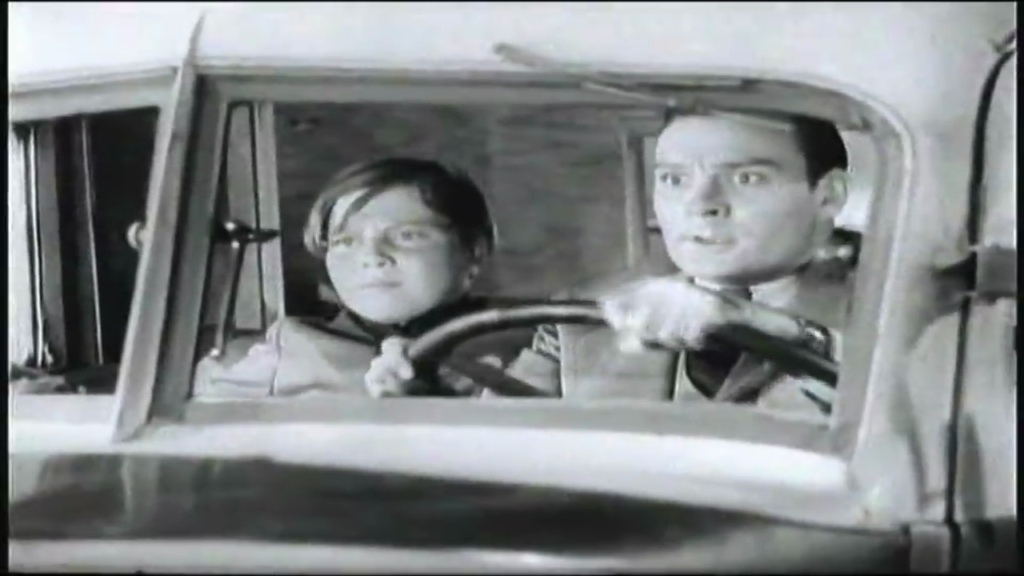-
#443 – The Fighting Devil Dogs (1938)
The Fighting Devi Dogs (1938)
Film review #443
Directors: William Witney, John English
SYNOPSIS: An American army unit stationed in Singapore is attacked by a lightning-based weapon that all but wipes them out. The two survivors, lieutenants Tom Grayson and Frank Corby learn that a masked villain known only as “The Lightning” is behind the attack, and is using a range of lightning-based weaponry to terrorise the world. Vowing revenge, Grayson and Corby seek out The Lightning and to put a stop to his villainous schemes once and for all…
THOUGHTS/ANALYSIS: The Fighting Devil Dogs is a 1938 Republic Pictures serial comprised of twelve chapters. The serial opens up with an American army unit on patrol in Singapore, where they stumble upon an outpost within which another unit has been wiped out. When their own unit is attacked by a strange lightning-based weapon, the only two survivors, lieutenants Tom Grayson and Frank Corby swear revenge by going after the perpetrator, a criminal who calls himself “The Lightning,” who is terrorising the world with his lightning-based weaponry. The serial revolves around Grayson and Corby, along with their friends, attempting to stop The Lightning’s various schemes, alongside trying to track him down, and exposing his identity as they believe him to be one of his inner circle. Nothing very new here. The story does move at an even pace, and is decently structured, with different settings and action sequences to keep things interesting. As always, there’s not too much to comment on in terms of serial plots, as they always revolve around the same two or three tropes. One notable aspect of the serial is that there is a lot of footage re-used from other serials. For example, the Lightning’s “Flying Wing” aircraft that resembles a modern stealth bomber is the exact same one that is seen in the 1937 Dick Tracy serial. There are no new shots of it, and viewers would undoubtedly remember it if they had seen the popular Dick Tracy serial. In a time where you could only watch these serials at the theatre, maybe people would have been less likely to remember what they had seen in previous serials, or maybe they wanted to capitalise on the popularity of the Dick Tracy serial. The real reason for the stock footage re-use is obviously to save money, but there’s certainly worse footage they could have re-used from worse serials.
The cast of characters is all very familiar and predictable to serial watchers: Grayson and Corby are the young male heroes who do the action sequences and get into plenty of fistfights. The supporting case consists of the usual sole female character, and a cast of minor characters of whom are all suspects for the real identity of “The Lightning.” On the villain himself, he is quite a cool character, with his black outfit, slick helmet, and a lightning gun to shoot people with. The one thing that undoes his image is his nasally, cartoon-ish voice that makes him sound like Skeletor from He-man. A common observation is that “The Lightning” may have very well been an inspiration for the character of Darth Vader. George Lucas is well known to have been a fan of serial movies in his youth, and there’s plenty of aspects of his films that are directly taken from the format, such as the scrolling text openings of Star Wars (and their episodic format), and the general style of Indiana Jones, including his outfit which is almost identical to a character in the Jack Armstrong serial. With this in mind, I think it’s more than a coincidence that “The Lightning” inspired a villain dressed in a black suit, cloak and helmet, who fires lightning from his hands. Also now that I think about it, the “Star Destroyer” ships in Star Wars have the same triangular ship as the “Flying Wing” in this serial…
William Witney, one of the directors of this serial, has stated that this is one of the worst serials that he ever worked on. From the director’s standpoint, I can completely understand why: the sheer amount of stock footage means that the director wouldn’t have to do much, in particular, direct the more exciting scenes which are taken from previous serials. There’s also the fact that there are two flashback chapters which just re-run footage of previous chapters, meaning even less need for a director. It’s no surprise that the serial was only one of three that Republic Pictures made that came in under budget. Another thing holding the serial back is that some of the acting is pretty bad, especially from the two male leads, who often sound like they’ve just barely memorised their lines. Other than the director’s misgivings, I would not classify The Fight Devil Dogs as one of the worst serials. It has some problems in it’s constant re-using of footage, and it’s poor acting, but the plot is fairly even and easy enough to follow, and the villain has a pretty cool design, making it watchable and mildly entertaining.
-
#411 – The Spider’s Web (1938)
The Spider’s Web (1938)
Film review #411
Directors: James W. Horne, Ray Taylor
SYNOPSIS: A wave of crime across the city targeting key infrastructure and transportation networks is being conducted by a criminal mastermind known only as “The Octopus” with aims to take over all the key utilities and companies. Criminologist Richard Wentworth must don his secret identity of “The Spider” in order to thwart The Octopus’ plans outside of the police’s rules and regulations…
THOUGHTS/ANALYSIS: The Spider’s Web is a 1938 serial based on the comic book character “The Spider” (not to be confused with spider-man). The serial starts out strongly as most of the format does in order to entice viewers back week after week. In the opening chapter contains plane crashes, car chases, fist fights and a heap of explosions, so there’s definitely plenty of bang for your buck. The explosions and destruction of key transport and city infrastructure is being carried out by a criminal mastermind known only as “The Octopus,” who seeks to put his own men in charge of all these utilities by killing off the current managers of them. Renowned criminologist Richard Wentworth is travelling home on his plane with his sweetheart Nita van Sloan when their plane is attacked and they have to parachute out. Wentworth learns of this new crime wave and decides to once again become the masked vigilante “The Spider,” who chases crime where the rules and regulations of the police cannot go, even though he promised Nita that he had retired from the costumed life. The story is a standard serial affair of the hero foiling the villain’s various schemes across the fifteen chapters, and while it does not do much unique in terms of story, it still executes the usual plot points in a fun and interesting way, and with a good level of competency.
The characters are a typical cast of serial characters. Wentworth is the usual lead character, Nita is the sole female character, and Jackson is the sidekick who gets in on some of the action. Ram Singh is Wentworth’s assistant who is clearly meant to be Indian, but is portrayed by a white American and refers to him as “Master” occasionally like he is a servant. and that is obviously a problematic stereotype of non-white people being subservient to them. Wentworth himself is very much like Batman’s alter-ego Bruce Wayne: he is rich, clever, works alongside the police, but when he dons his mask to fight crime, he is wanted by them. He can also disguise himself as a known criminal “Blinky” McQuaid, which he uses to get close to the criminals and get the information on their plans. These different facets to the main character add some good variety to the serial, and make the lead a bit more stand-out from the sheer volume of serial leads which all look and act the same. The Octopus as a villain is shown to be cunning and ruthless, as he executes those who fail him. His being dressed in a white hood and cloak mirrors the Spider’s outfit, which is almost the same, but in black. The identity of The Octopus is, unusually for such a serial, never really explored or even revealed in the finale, and we are only told he is one of the most powerful men in the city.
At the time of it’s release, The Spider’s Web was a huge success, and it is easy to see why: it doesn’t deviate from the serial format, but does all its tropes pretty well. The character of The Spider as a masked vigilante probably helped kick-start the popularity of masked superheroes, and serial adaptations in the 1940s. The Green Hornet, one such serial, is practically identical in both story and characters, with the masked vigilante stopping crime and eluding the police, while being aided by a foreign sidekick.
-
#384 – Dick Tracy Returns (1938)
Dick Tracy Returns (1938)
Film review #384
Directors: William Witney, John English
SYNOPSIS: F.B.I. G-man Dick Tracy is on the trail of the Stark family: A criminal gang consisting of “Pa Stark” and his five sons. When new G-man recruit Ron Merton is murdered by the Starks when they hijack a convoy, Tracy swears revenge and attempts to track them down while thwarting their many villainous schemes.
THOUGHTS/ANALYSIS: Dick Tracy Returns is a 1938 film serial and the sequel to the Dick Tracy serial released a year earlier. The story this time revolves around Dick Tracy trying to thwart the criminal enterprises of the Stark family criminal gang, led by Papa Stark and his five sons Champ, Trigger, Dude, Kid and Slasher (great names). The Starks have a range of schemes and crimes they try to carry out, and this gives the serial enough variety to see it through, as Tracy and his team have to stop them across land, sea and air, resulting in an array of chases, as well as some good old-fashioned detective work. The original Dick Tracy serial was a strong mix of serial elements that kept its momentum across its fifteen chapters. Dick Tracy Returns emulates that success and continues it. There’s not much new here, but since the original was a success, there isn’t any need to fix what is not broken. And of course, in an era without repeats on television or home media, it was easier to repeat things on screen as the only way to watch these serials was to go to the theatre every week for the next instalment.
Most of the protagonists from the first serial return with the same actors, which provides a good sense of continuity. The only real change is that a different actor plays Junior, but that’s not much of a distraction. There’s not much character development, but every character has a role to play, from the heroic Dick Tracy and Steve Lockwood, the humour from Mike McGurk, and Tracy’s assistant Gwen, there’s a decent amount of variety in the characters. The villains are also fairly interesting, and showing Tracy stop the individual sons of papa Stark makes the story flow a little easier. Like the first serial, Dick Tracy Returns is a good example of the movie serial format, and has plenty of action, distinguishable characters and thrilling cliffhangers to keep viewers coming back. It’s mostly par for the course for the serial format, but a good example of it.
